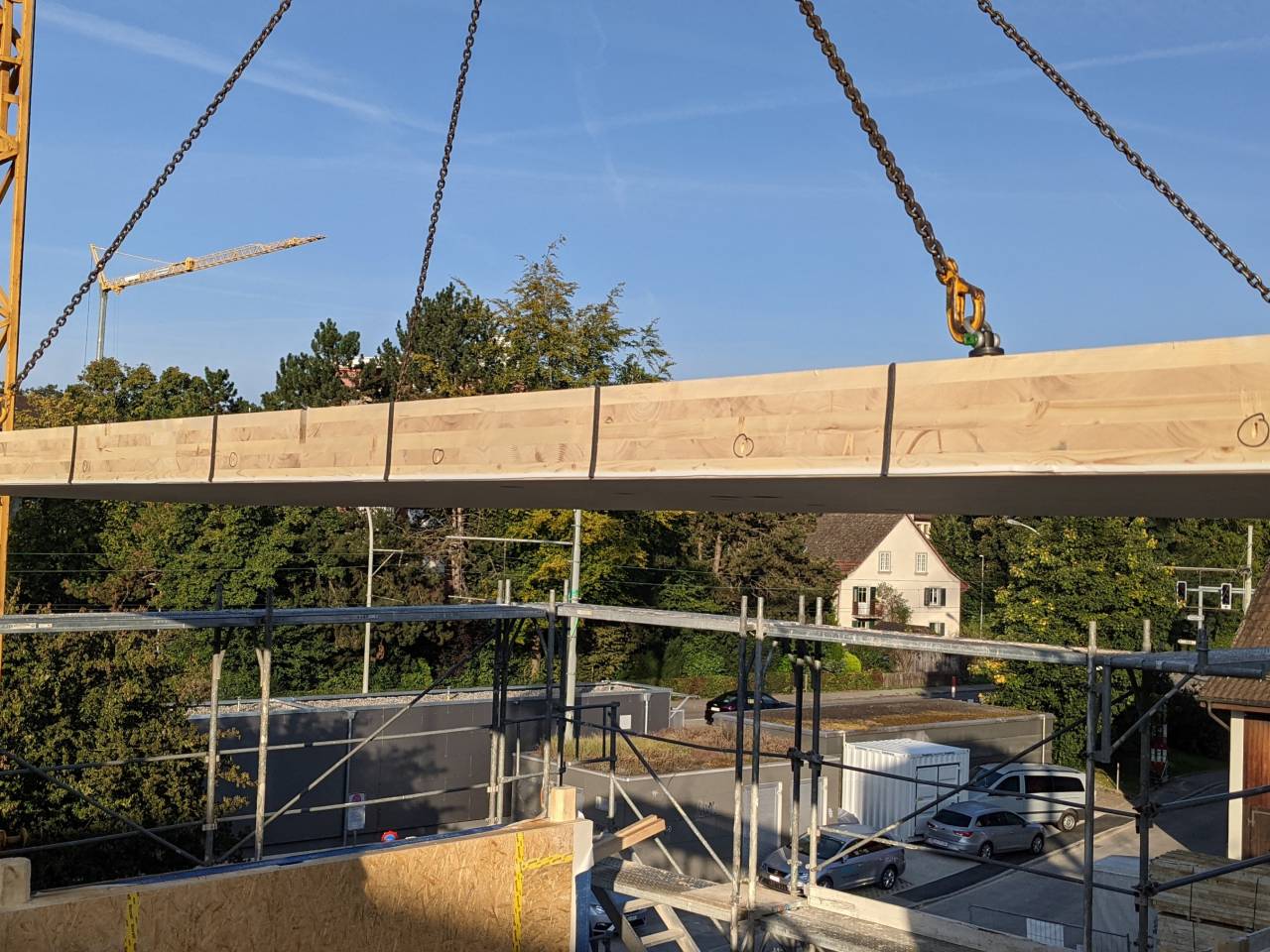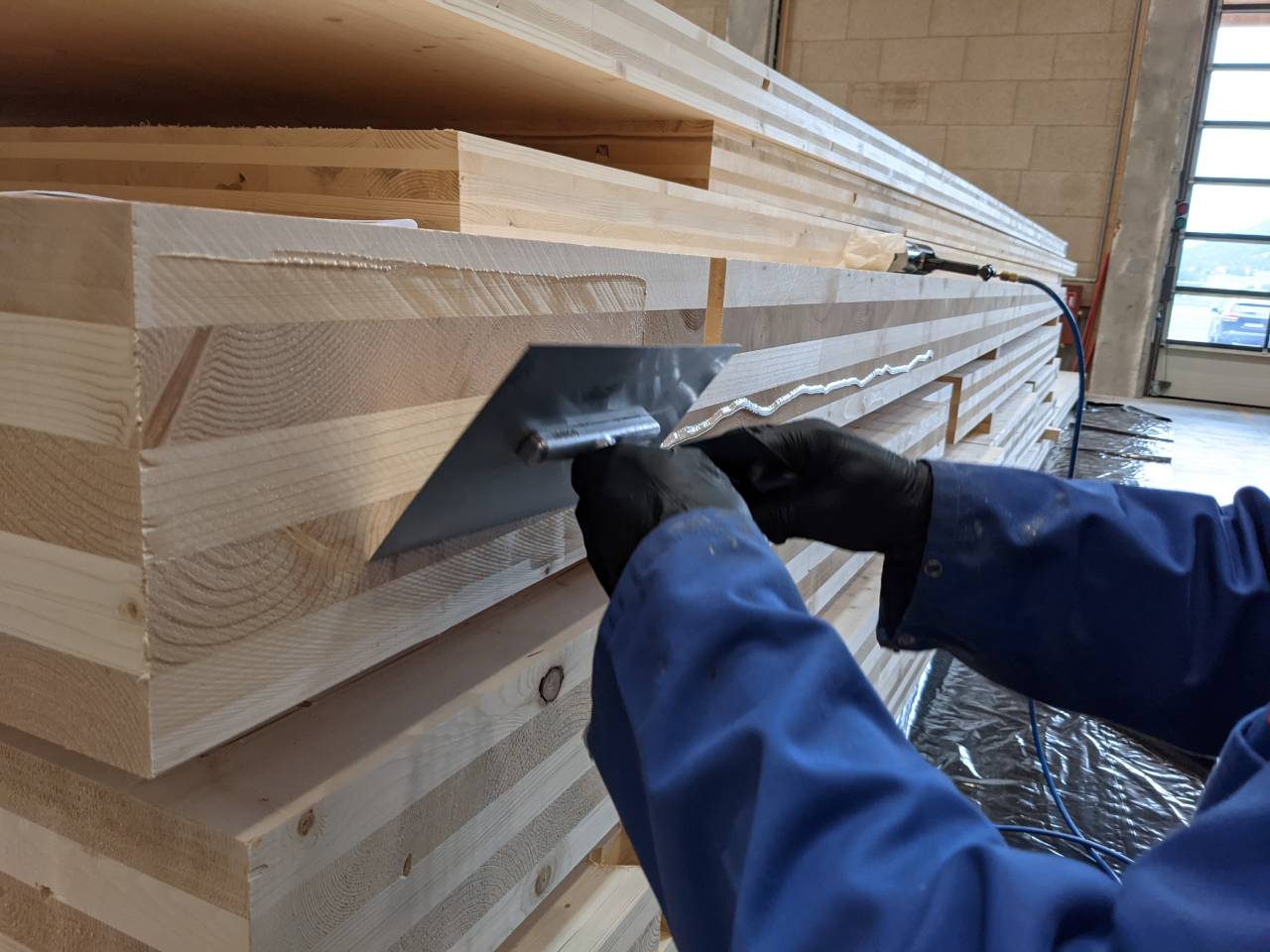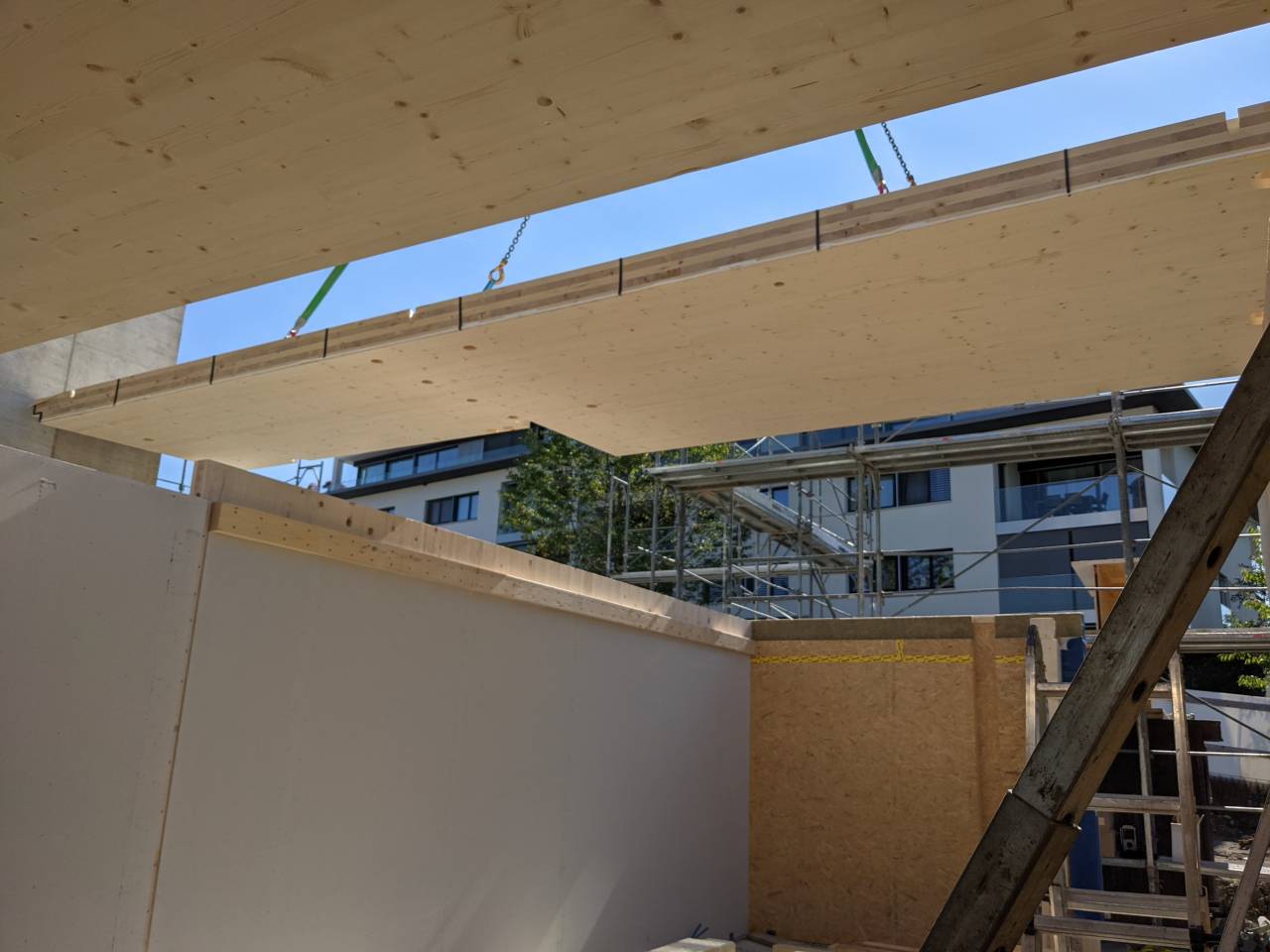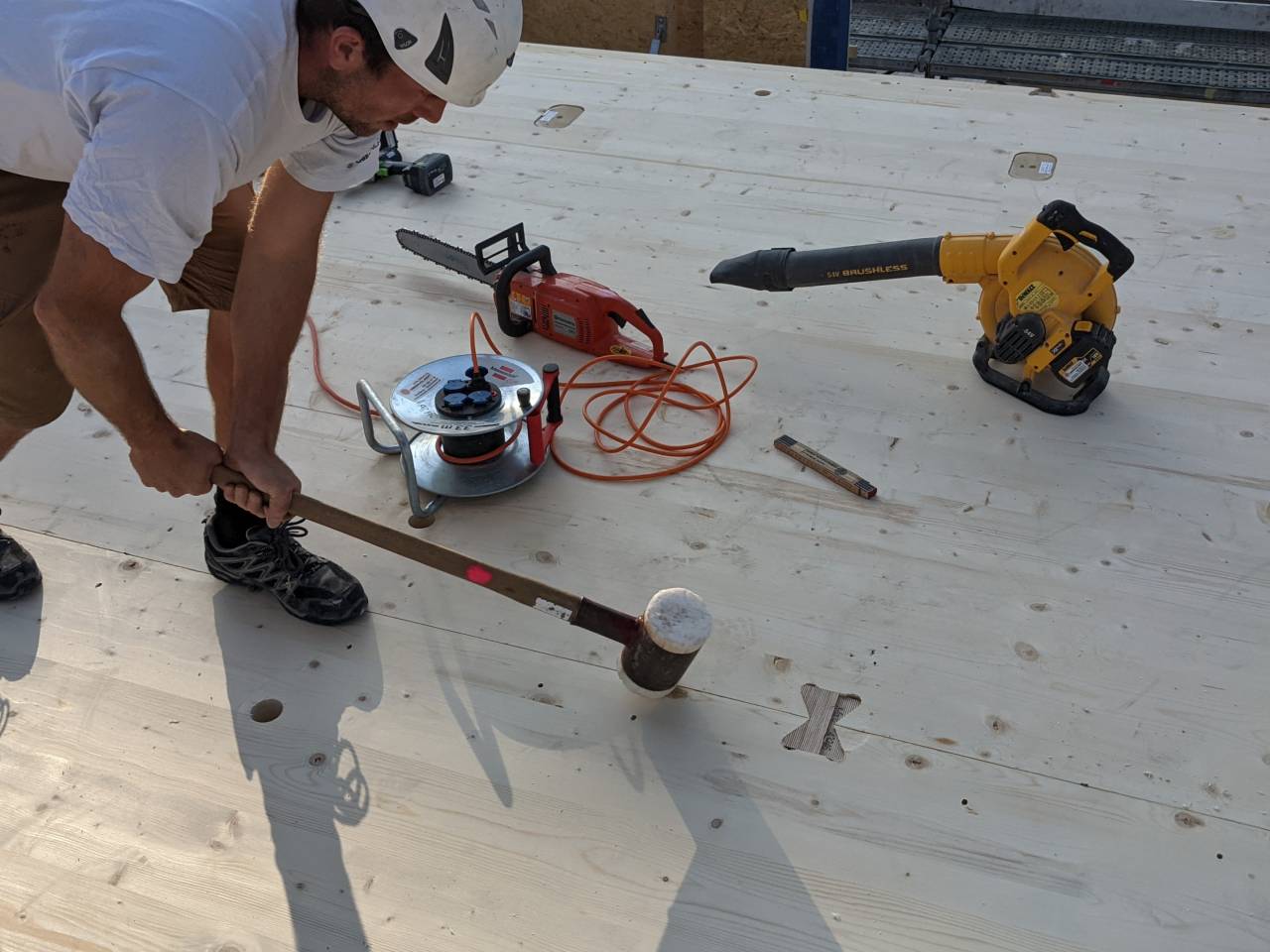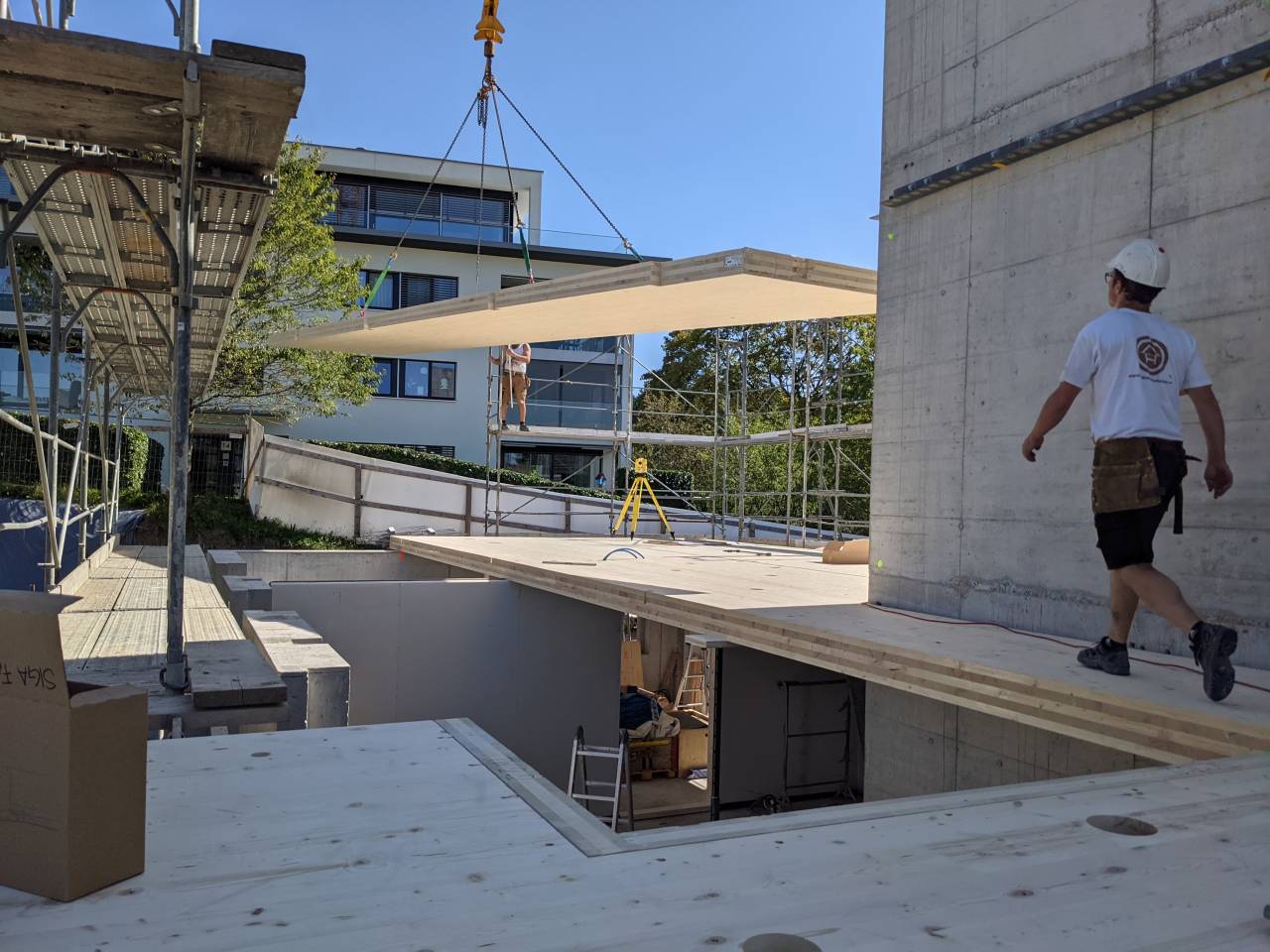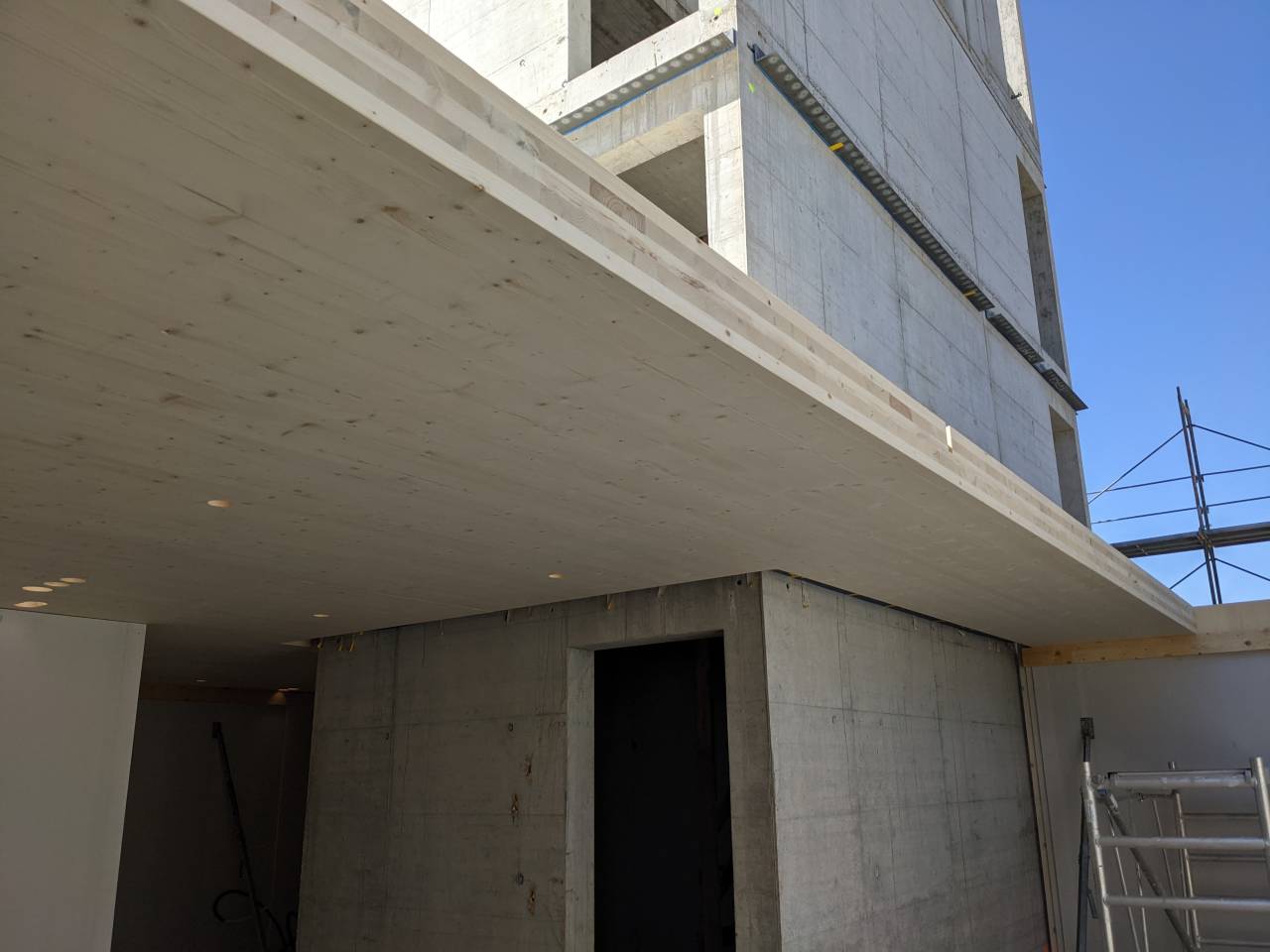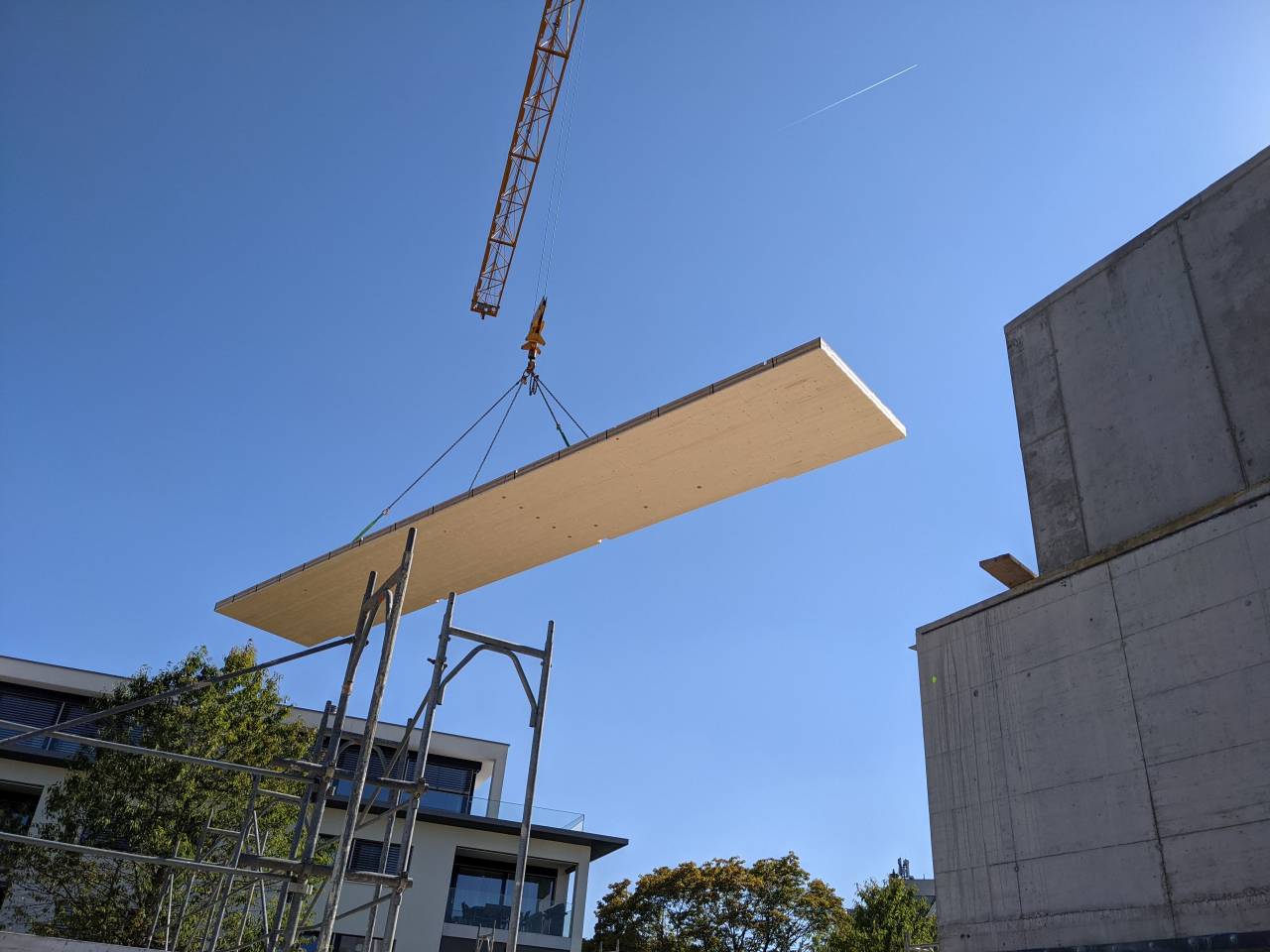New possibilities thanks to TS3 technology
19. Sep 2013
In the recently occupied apartment buildings on the lower right bank of Lake Zurich, the advantages of TS3 technology and timber construction are both noticeable and visible: the column-and-plate construction allows flexible room division, and the timber ceilings run from the inside to the outside without the need for complex cantilever connections. Learn more here.
A sustainable building is characterized by high ecological and economic quality. During the planning and construction of the two apartment buildings in Zollikerberg, merkli degen architekten GmbH therefore attached great importance to these aspects. Building materials were carefully selected and used where they make sense.
The fact that timber construction performs well from an ecological point of view is now widely known. Wood has other advantages over other building materials. It doesn't need to dry out after it's been installed - so buildings are built faster and are ready for occupancy sooner. It is lightweight, which allows for smaller foundations. And: wooden buildings offer natural, comfortable rooms with a high degree of coziness. Thanks to TS3 technology, new possibilities are opening up.
Advantages of timber construction combined with the advantages of TS3 technology
The above-ground building is a timber structure consisting of timber columns and cross laminated timber panels connected with TS3 technology. Timber Structures 3.0 technology, or TS3 for short, is a process that allows large areas to be made of wood - without the joists that were previously common. These large surfaces can replace reinforced concrete in most areas and are also suitable for floor slabs such as those in below grade. TS3 connects timber components to each other via their end faces in a flexurally rigid manner. For decades, this was considered impossible. Ten years of research together with the ETH Zurich and the Bern University of Applied Sciences were necessary to find the solution: A process using a two-component polyurethane casting resin. This resin connects the wooden elements and enables a new timber construction method.

The floor slabs rest only on the columns, which are usually positioned in the exterior walls, and the staircase core. The rooms can thus be designed very flexibly. The position plan shows the columns (points) the few load-bearing walls and the TS3 joints. A total of 470 meters of TS3 joints were created.
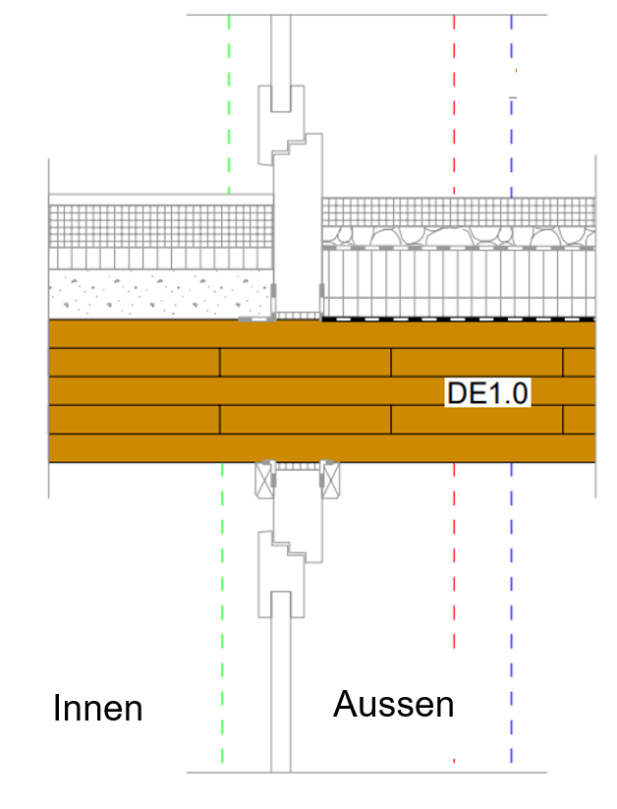

Thermal bridges made simple. Because of the low thermal conductivity of wood, there is no need for elaborate cantilever connections. The CLT ceiling simply runs through from the apartment to the loggia. This construction method allows for the column-and-plate construction of TS3 and the non-load-bearing exterior walls.
TS3 - simple to use
TS3 technology is a new construction system with a flexurally rigid in-plane connection between cross-laminated timber panels. The TS3 connection by means of joint grouting enables the construction of joist-free timber skeleton building structures with slender, point-supported panels. By activating the secondary load-bearing direction, wood can be used to build the same slabs as reinforced concrete, using only conventional cross-laminated timber and TS3 jointing technology. For the production of TS3 joints, Timber Structures 3.0 AG trains carpenters and woodworkers. You can find out more here.
Involved
- Architecture: merkli degen architekten GmbH www.merklidegen.ch
- Timber construction: Holzbau Oberholzer GmbH www.holzbau-oberholzer.ch
- Structural analysis and design, fire protection, building physics: Timbatec Holzbauingenieure AG www.timbatec.com
- TS3 joint grouting: Timber Structures 3.0 AG














